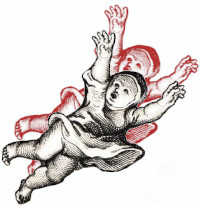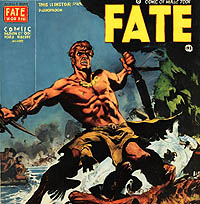What is the classic shipwreck? How do we define such disasters?
The shipwreck is one of the oldest story forms, extending in reality and fantasy from the stone-age to the space-age. As I write this a new Will Smith movie about a father and son shipwrecked on a savage planet in the far future, is being advertised in theatres [I’m messing with my overworked proofreader. It is correct, just not preferred]. What is the appeal?
Let’s start by defining this fascinating story type which spans fiction and nonfiction.
The ‘occupational’ shipwreck is one in which the victims of the disaster are a cohesive team and are somewhat in their element. Yes, the shipwreck is a disaster, but it is a remote yet ever-present risk of the protagonists’ occupation. Such true life tales as The Perfect Storm, The Mutiny on the Bounty [a complex case] as well as fiction like Moby Dick and Hell in the Pacific fall into this category. What you get in such a tale is the intensification and continuation of a way of life, an adventure; that spins out of control. As the reader you have a coherent cast of characters to get behind.
The ‘militant’ shipwreck might also be said to be 'ideal', at least for the shipwrecked, though not necessarily for the natives. Whenever early Age of Sail explorers organized along military lines from Spain or Portugal found themselves marooned—lookout locals. Conquistador attitudes towards a shipwreck did not always result in survival for the sailors and conquest-minded passengers. You might say that the Iberian attitude to such an eventuality was something like ‘nothing a little genocide can’t fix’. The militant attitude of being at war makes for a fairly survivable experience that may well be unpleasant to all involved. To be a member of a 16th Century stone-age society, suddenly confronted with a wrecked Spanish galleon in your backyard, conjures up images of a suburban American looking out back while brewing his morning coffee to discover that a pod full of three Predators is smoldering beneath his boy’s plastic tree house…
The ‘classic’ shipwreck is one that involves a variety of passengers that are not involved in the actual operation of the ship and also do not constitute dedicated landing parties of explorers or conquerors. So, when that ship smashes up, only the sailors can help themselves and others. Most tellingly, once everyone is ashore, no one is really prepared to deal with that. The classic shipwreck generally lacks leadership, but does not lack a diverse cast. This makes for the best shipwreck fiction, and has been extensively mined for TV and movies. The Wreck of the Medusa [reviewed on this blog], Titanic and Caliban’s Shore are nonfiction variations on the theme. Robinson Caruso, Swiss Family Robinson and Pitch Black are some fictional examples.
Caliban’s Shore
The Wreck of the Grosvenor and the Strange Fate of Her Survivors
Stephan Taylor
W. W. Norton & Company, NY, 2004, 297 pages
Stephan Taylor is a writer who specializes in South and Southeastern Africa. Caliban’s Shore is a comprehensive account of the disaster. The back-story of the crew and passenger list is developed early on. The treacherous waters of the Southeast African coast, and the hinterland also gets fleshed out to the point where the reader has little trouble envisioning the landscape. The author seems to have walked portions of the route travelled by some survivors.
The highlight of the book for me was the description of life aboard a British Indiaman, the loot ships that the British East India Company shipped goods and personnel home on. These ships carried an incredible amount of alcohol. It is a wonder anything got accomplished by the crew, a crew led by officers who were among the worst available. Next to the amount of alcohol jammed onto one of these creaking, leaking vomit boards I suppose the most amazing thing is how many people were jammed onboard! Imagine a one block unit of five row houses sealed into a ship’s keel and jammed full of hundreds of people, all of the cellars full of booze, all commanded by some prissy aristocrat in a wig. What could possibly go wrong?
The account of the actual shipwreck is harrowing. But the real story gets going when the survivors—a lot of them—are marooned on a semi-populated strip of coastland, where the natives are used to scavenging shipwrecks, and whose ancestors passed down stories of dealing with military shipwrecks, of the ‘kill everything we can’t carry’ variety.
Without leadership, and consisting as it did of socially and culturally stratified groups and individuals, the story becomes a search for the various splinter groups of survivors. This approach breaks into five [at least] stories of survival and eventually closure. There were some survivors who were interviewed in England, as well as some who left folk trails in South Africa. There are three stories that particularly intrigued me. There was a small group of tough reasonable men who banded together for a harrowing adventure. I personally identified the most with this story—could imagine being one of those guys.
There was a large group of sailors who, without effective leadership, banded together in the cause of saving a young mixed-race boy. One of the telling points about this book was the fact that only the poor hard-bitten sailors showed much compassion for others.
Then there was the eye-opener, the story of the women, some of them rich. Do not hold your breath waiting for an Englishman to defend or aid a woman. That was not even in the template. As a counterpoint to this fact I found it enlightening, that when news of the disaster reached home, that the relatives of the white women voiced one universal hope: that their female relatives had died rather than ‘go native’ and live with a black husband.
Could you imagine a world in which it was the normal first response to news that a relative was shipwrecked to say, “Well I hope she died rather than shack up with a black man.”
What happened to the officers?
What happened to the sailors?
What happened to the servants, adventurers, paying passengers, and returning soldiers?
What happened to the women?
What was the fate of the little boy that the sailors fell in love with?
Read Stephen Taylor’s book and find out.











